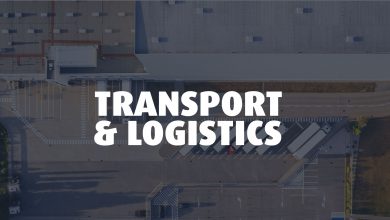Automatic conversion of constantly changing client orders with Lobster_data
No quiet admin jobs here: since 1996 the Swiss transport and logistics group Planzer has grown extremely dynamically – every year several newly established or acquired companies and holdings are added. All of them must be integrated into the existing company structures. Add to that customers who expect a high degree of flexibility from their service provider – not only in operational matters, but also in the administrative area.
Every month Planzer handles over 300,000 orders. A large part of it – in the warehouse more than 80% and in the haulage business significantly more than half the orders – are already received in digital form. “Of course our clients determine the format they send us their data and as a service provider we adapt to it,” explains Andreas Meister, Software Engineer at Planzer AG.
Staged implementation
Each client sends their orders in their individual format. As a result about 400 dedicated interfaces had been built between Planzer’s central IT and clients, and the number is constantly growing. UN/EDIFACT, ASCII, IDOC (SAP) and XML formats are among the most commonly used. Not only do the files differ by their extensions, but especially in the order, meaning, and description of each data field.
A typical example is a shipping order generated in the client’s ERP system. This data is sent to Planzer via EDI. The data must be recognised, interpreted, converted and imported into Planzer’s own built transportation management or warehouse management system. Around 25 employees are constantly adapting and improving the proprietary systems in the central IT department in Dietikon.
Since 2009 however, Planzer has relied on Lobster_data to convert and import such data. In a staged process Lobster_data replaces a solution that had been used for more than 10 years. The reasons for the change were flexibility in the areas of support and development, extremely fast response times to customer inquiries as well as cost benefits. “For very complex file structures we need partners that we can fall back on quickly,” explains Andreas Meister. With Lobster they would usually receive a solution on the same day.
Seamless data conversion and transmission
The Lobster_data detects data formats and automatically converts them automatically and reliably as required according to predefined rules. The information obtained is immediately imported into the target system using the Lobster Integration Server, a standard component of Lobster_data. Depending on the definition this is either the Planzer Warehouse System PWS or Planzer Transport Management System PTS.
Thus, Lobster_data combines the conversion and data distribution tasks in a single system. Lobster_data easily integrates various systems and communication protocols such as FTP, SFTP, OFTP, AS2, HTTP, HTTPS, or email. A workflow that required multiple software products is now managed using Lobster_data in a seamless process.
Another advantage is the user-friendly application: “Using Lobster_data any data formats can be sent to the target system in just seven steps using a graphical interface” explains Andreas Meister. In the day-to-day running of the solution, the central monitoring within Lobster_data plays an important role. Here, all transmitted data sets can be tracked on screen.
This kind of monitoring is possible due to the high degree of integration of Lobster_data, which offers nearly all communication protocols and data formats as standard. Any errors during the conversion are highlighted in colour. “In contrast to our previous solution we monitor at a glance the whole process and can detect and resolve specific problems that may arise along the chain immediately,” comments Meister.
Significant improvements in processing times
For monitoring and mapping alone Planzer employs two staff that focus on the areas of PLS and PTS.
Unilateral changes at the clients’ system, new software versions, incorrect post codes or incorrect separators between the individual data fields continuously require intervention. The central monitoring made this task a lot easier and achieved a high acceptance among Meister’s colleagues right from the outset.
For a time Planzer used both Lobster_data and the legacy system in a parallel run for automatic data conversion. “In a direct comparison, we saw that Lobster_data processing times were significantly shorter,” says Meister. This way, orders are entered faster, which accelerates the processes as a whole. This time saving is partly due to the query rhythm. Instead of four times per hour, Lobster_data checks every second whether there is new data for processing in the system.
Andreas Meister is very happy with the performance and quality of Lobster_data. Therefore the team was highly motivated to replicate all 400 interfaces in Lobster_data.The project was completed by the end of 2010.
More Use Cases on our blog.



